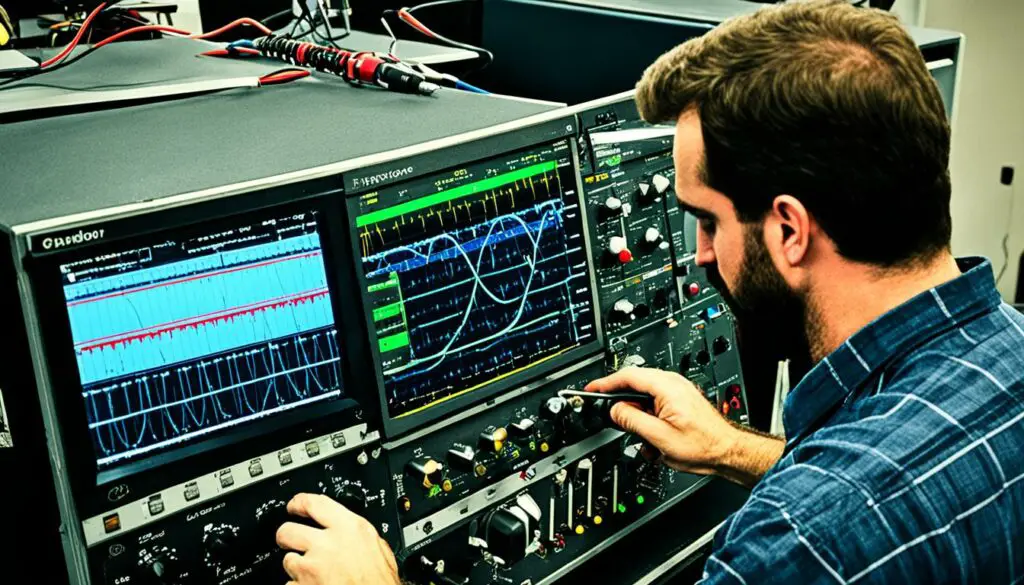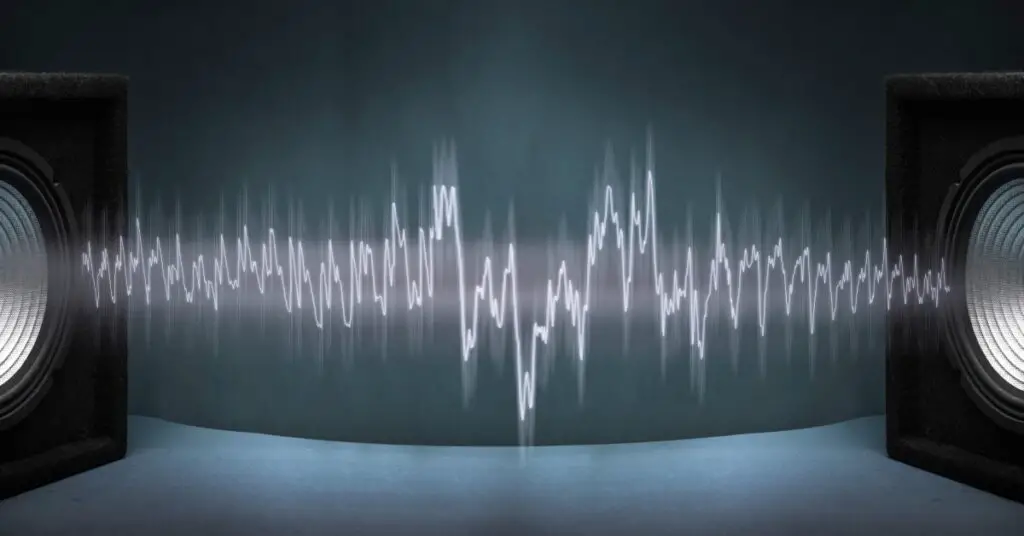
Have you ever wondered why some recordings sound crystal clear while others have that annoying hiss in the background? The secret often lies in something called Equivalent Input Noise, or EIN for short. It's a bit like the static noise you hear when there's no signal on your radio, but in the world of audio and electronics, it's a crucial measure we use to understand how much unwanted noise a piece of equipment adds to the sound. Whether you're setting up a home studio, choosing a mic for your podcast, or simply curious about how your audio gear works, understanding EIN can make a big difference. So, let's dive into what EIN is and why it's so important for anyone interested in sound.

When we talk about Equivalent Input Noise, or EIN, we're diving into the world of audio gear and uncovering how much unwanted noise equipment like microphones and preamplifiers add to your sound. Imagine you're in a completely silent room and you start recording. Theoretically, you shouldn't hear anything, right? But, in reality, you might notice a soft hiss or static. That's where EIN comes in - it measures this background noise, giving us a way to compare how 'quiet' different audio devices are.
EIN is measured in decibels (dB), and it tells us the amount of noise that an audio device generates on its own, without any actual sound signal coming in. It's a bit like measuring how much noise a room makes without anyone talking or moving in it. Lower EIN numbers mean less noise, which is what we want for clearer recordings.
To measure EIN, experts use a specific setup that mimics real-life conditions, often involving a resistor to simulate a microphone's presence. This helps ensure that the EIN measurement is accurate and reflects how the device will perform in the real world.
In recording, every little sound gets picked up and can either enhance or detract from the final product. For audio professionals, knowing the EIN of their gear helps them make better choices for crystal-clear sound.
Now that you know what EIN is, let's discuss what causes it.
Thermal noise, also known as Johnson noise, tends to be the biggest culprit for noise generated in a device. This type of noise is generated by the natural movement of electrons in an audio device's circuitry, especially in resistors. It's a fundamental property of electrical devices and can vary based on temperature and resistance levels.
Another source of noise includes the electrical components themselves, such as capacitors and transistors, each adding their layer of noise to the mix. Additionally, external factors like electromagnetic interference from other electronic devices can also affect the EIN of audio gear.
The design and quality of electronic components play a significant role in determining a device's EIN. For instance, a microphone preamplifier with high-quality components and careful circuit design can have significantly lower EIN compared to one with lower quality parts. Manufacturers often specify the EIN of their products, giving users a way to compare the potential noise performance before making a purchase.
Moreover, the gain setting on a device can impact its EIN. Higher gain settings can amplify not only the desired signal but also the underlying noise, affecting the overall noise performance. Understanding the relationship between gain and EIN is key for audio professionals looking to minimize noise in their recordings.
Beyond the device itself, environmental conditions can influence EIN. The ambient temperature, for instance, can affect thermal noise levels. Similarly, electronic interference from nearby devices – think computers, smartphones, and even fluorescent lights – can contribute to the noise floor, subtly altering a device's EIN in practical settings.

Now you know what causes EIN, let's discuss how we can manage it.
Achieving clearer recordings starts with minimizing Equivalent Input Noise (EIN). One effective strategy is selecting audio gear with low EIN specifications. Manufacturers often list EIN values, allowing you to compare and choose equipment that promises less background noise. But, it's not just about the numbers; understanding how these values translate in real-world settings is crucial. Below is a table of the EIN levels of some popular audio interfaces.
| Brand/Model | EIN Rating (dBu) | Gain Range (dB) | Notable Features |
|---|---|---|---|
| Focusrite Scarlett 2i2 | -128 | 56 | Low-latency monitoring |
| Universal Audio Apollo Twin | -129 | 65 | Onboard DSP for real-time processing |
| Behringer U-Phoria UMC204HD | -125 | 55 | MIDAS pre-amps |
| Steinberg UR22mkII | -126 | 60 | iPad connectivity |
Investing in high-quality microphones and preamplifiers can significantly impact EIN. These components are the frontline in your battle against unwanted noise. For microphones, consider those designed to offer lower self-noise, which directly contributes to a lower EIN. Similarly, preamplifiers with superior electronic design and lower gain settings can reduce the amount of noise introduced into your recordings.
Your recording environment plays a substantial role in managing EIN. External sources of noise, such as air conditioning units, computer fans, or even traffic outside, can affect your recordings. Creating a quiet, controlled environment minimizes these external contributors to EIN, ensuring that your equipment's inherent noise levels are the only factors at play.
Understanding and optimizing your audio system's gain structure is another vital step in reducing EIN. Setting gain levels appropriately across your audio chain can minimize the noise floor, allowing for cleaner recordings. It's about finding the right balance; too much gain can amplify noise, while too little may not capture the nuances of the sound you're recording.
EIN is integral to understanding the performance of pre-amps because it enables users to gauge the amount of noise introduced to an audio signal by the pre-amp. This is particularly important when using high gains in signal processing within an audio interface, as it affects whether the resulting audio is clear or interspersed with undesirable noise.
EIN directly affects the performance of audio interfaces, given that these devices use built-in pre-amps to amplify signals. At high gain settings, which are common in audio recording, even slight noise can significantly degrade the quality of the audio. Therefore, a low EIN is critical to maintaining clarity and reducing interference in signals throughout the recording process.
The signal-to-noise ratio (SNR) impacts recording by quantifying the level of desired signal relative to the level of background noise. A higher SNR means that the desired audio signal is much clearer compared to the noise, which is critical for high-quality recordings. Recording equipment with a high SNR will produce audio with less hiss or hum, thereby increasing audio fidelity.
Not necessarily. While EIN is an important factor, it's just one aspect of a device's overall performance. Other factors, such as frequency response, durability, and features, should also be considered when choosing audio equipment.
It's impossible to eliminate EIN entirely due to the inherent noise in electronic components. However, by choosing the right equipment and employing good recording practices, you can minimize EIN to levels where it's virtually inaudible and has no practical impact on your recordings.
Equivalent Input Noise is not just some technical jargon to gloss over; it's a crucial piece of the puzzle in picking the right gear and tweaking your setup just right to keep that pesky background noise at bay. Whether you're laying down tracks in a studio, starting your own podcast, or just passionate about crystal-clear sound, paying attention to EIN can seriously level up your audio game. It's all about choosing the right tools, setting up your space to keep noise out, and fine-tuning everything to let the true sound shine through. Remember, in the world of sound, the little details like EIN can make a big difference. So, here's to making your next project sound even better, one decibel at a time!
If you found this guide helpful, please consider subscribing to our blog for more music production tips, product reviews, and buying guides. Also, you can support new content by contributing to our tip jar.
"Some of the links within this article are affiliate links. These links are from various companies such as Amazon. This means if you click on any of these links and purchase the item or service, I will receive an affiliate commission. This is at no cost to you and the money gets invested back into Audio Sorcerer LLC."